Art Collectors
Hong Kong Collector Queenie Rosita Law on Looking Out for Overlooked Artists, and Why She Doesn’t Race to Buy Art
Law just opened Double Q Gallery in the city to spotlight under-the-radar artists from near and far.
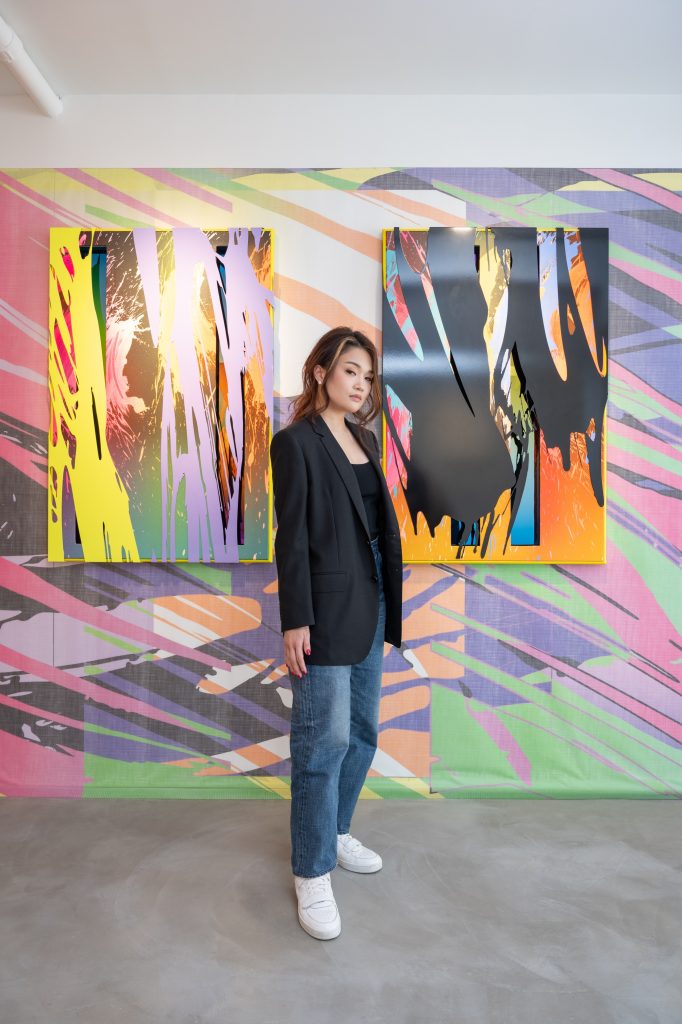
Law just opened Double Q Gallery in the city to spotlight under-the-radar artists from near and far.

Christine Ajudua

While building her art collection and non-profit Q Contemporary museum in Budapest, Hungary, the Hong Kong–born Queenie Rosita Law has also become an art-world fixture in her hometown.
Earlier this month, the 30-something entrepreneur launched Double Q Gallery in the city’s Sheung Wan district to showcase works from her growing collection, which focuses on emerging and historically overlooked artists from near and far. Her goal is to champion lesser-known talents while introducing the local community to international figures who lack exposure in Asia, where young people have been increasingly investing in art.
Double Q has a booth at Art Central, a satellite fair of Art Basel Hong Kong (ABHK), which opened to the public on Friday as the city reemerges from lockdown. Amid a busy Hong Kong Art Week, Law found time to speak with Artnet News about her collecting ethos, the artists on her radar, and how it feels to have her city and its art scene come back to life.
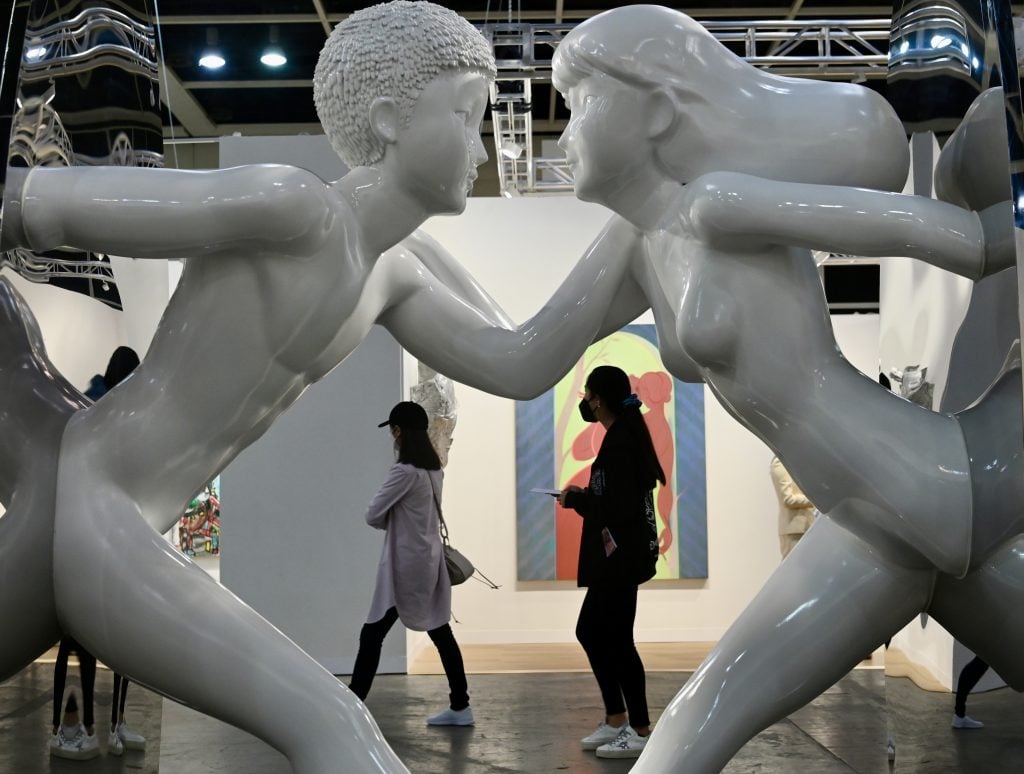
Art Basel Hong Kong 2022. Photo: Li Zhihua/China News Service via Getty Images.
On the reopening of Art Basel—and Hong Kong:
“I am just happy in general that it’s happening! There are so many events I am looking forward to, M+ museum is open again, and all of the institutions and galleries are having new shows. But I think the main joy comes from physical, social gatherings, which was impossible over the last few months in the city.”
On her plans for Hong Kong Art Week:
“My gallery is participating in Art Central [an Art Basel Hong Kong satellite fair, until May 29] for the first time. We have a solo booth to present the works of the late Hungarian geometric art pioneer Gizella Rákóczy and a multimedia installation, Police Party 22, by Hungarian artist Márton Nemes.
“We have arranged guided tours of our current exhibitions [at Double Q until June 4, 2022] featuring Nemes and Tomo Campbell, another emerging artist—not only with collectors, but also with students. Our mission is to share art with a broader audience, and we are committed to engaging with the local community.”
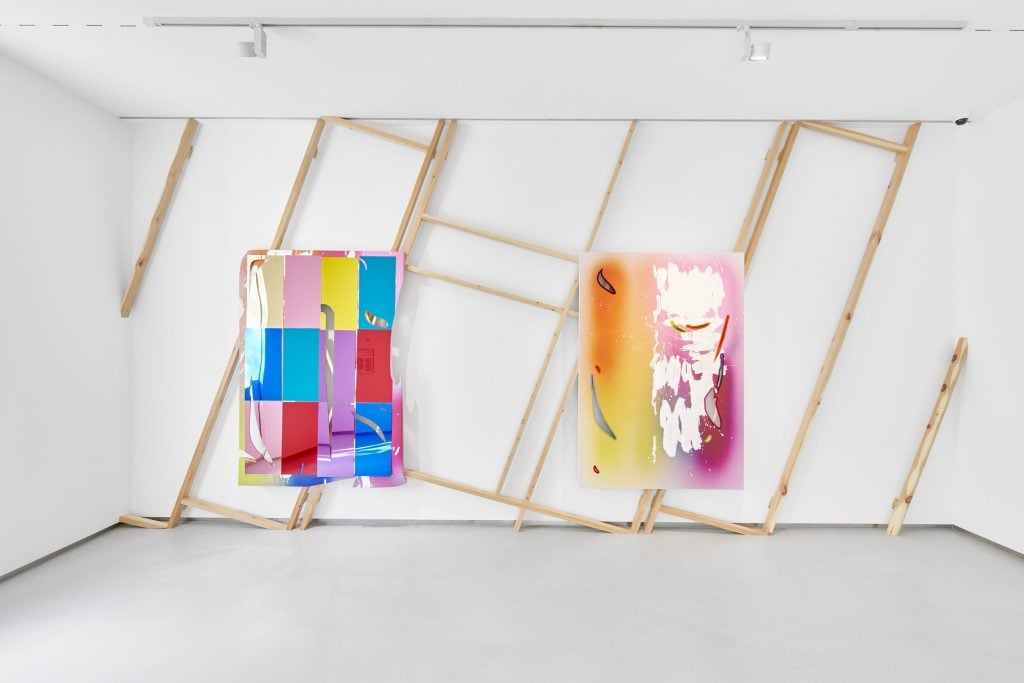
Work by Márton Nemes at Double Q. Courtesy of the artist.
On the art of collecting:
“What is key is championing artists who have been overlooked. My collection predominately focuses on Central Eastern European art from the ’60s onwards—I love the raw energy some of these works radiate—and it has expanded into other countries. Generally, I love work that evokes strong, visceral emotions.”
On why she doesn’t sweat the works that get away:
“I really believe in artists in general, and not in singular pieces of art. If you like an artist, there should be more than one work you like, so you might miss one at the fair, but there should be others later on.
“For example, I discovered Czech artist Anna Hulačová at ABHK three or four years ago. I didn’t buy any of her works at the fair, but I bought one from the same gallery the following year.”
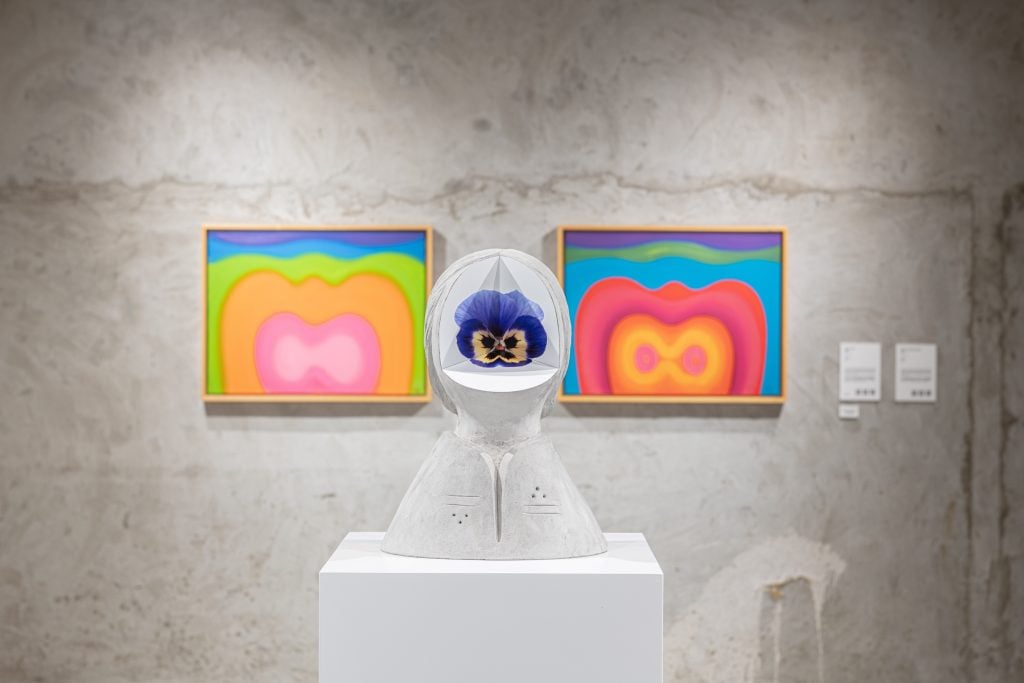
Work by Anna Hulačová. Courtesy of the artist.
On the artists on her radar at this year’s ABHK:
“While I like to discover new names, there are a few artists I’m definitely interested in: Daniel Correa Mejía, Lenz Geerk, Jenna Gribbon, and Simon Hantaï. I have only seen their works through Instagram or PDFs. I am looking forward to seeing them in real life.”
On eating and drinking in the area (Wan Chai):
“I like the Terrace at the Hari [which serves lunch from the hotel’s Japanese restaurant, Zoku] for some sun, and Bakehouse for sourdough egg tarts. A good spot for coffee is Between.
“I’ll have an intimate dinner at Da Domenico for its famous red prawn pasta, or Roots for their fresh local ingredients. And to end the day, I head to Salisterra [a Mediterranean restaurant and bar at the Upper House hotel] for more champagne!”
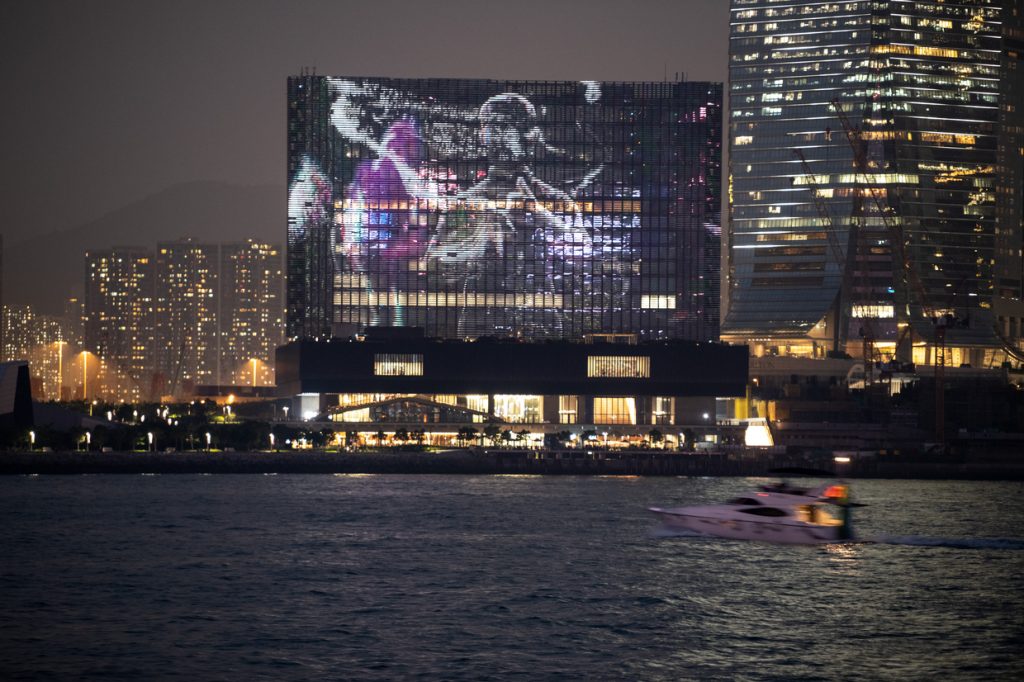
Ellen Pau, The Shape of Light: Healing through the Heart Sutra, at M+. Courtesy of Art Basel in Hong Kong 2022.
On local art she loves:
“Taka Ishii Gallery is a gem hidden near Star Street. And Ellen Pau’s The Shape of Light: Healing through the Heart Sutra [until June 19, 2022] has transformed the façade of the M+ [into a 14-minute video installation co-commissioned by the museum and Art Basel].
“The artist collected video footage of lighthouses in the ’90s; she used images from her archive to turn the new museum into a lighthouse itself. I see this as a highly symbolic act during this time in Hong Kong—museums can act as beacons of hope.”